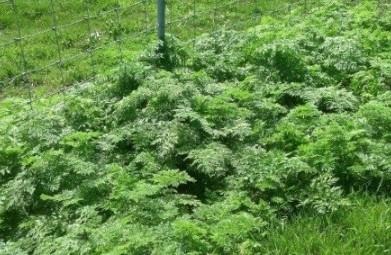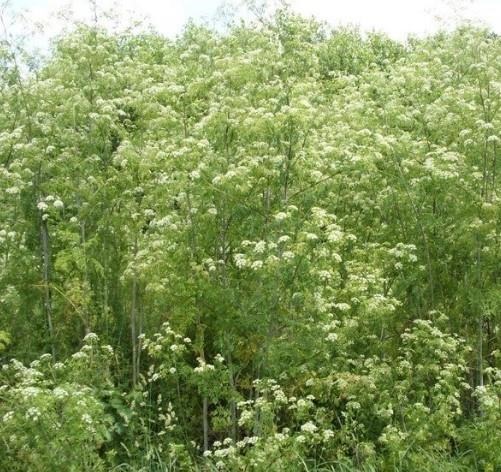By William S. Curran
“This is the time of year when you start to notice poison hemlock in your pastures or along fence rows and roadsides. Best management practices should take place before it flowers, produces more seed, and continues to spread”.

Poison hemlock is a biennial plant with a basal rosette of leaves in its first year. Once it overwinters, plants will bolt into an erect branched plant producing conspicuous white flowers generally in June and July (see accompanying image).; Poison hemlock is in the parsley family and the leaves and foliage resemble carrot and parsley. Late April and early May are the time of year when you start to notice it in fallow areas, fence rows, pastures, roadsides and creeks as it begins to bolt and soon will be flowering. Plants can reach up to 6 feet tall and have a smooth, hollow stem with purple spots and a disagreeable odor when the leaves crushed.

Poison hemlock is native to Europe, northern Africa, and western Asia and was introduced to North America as an ornamental garden plant. It is infamous as a poisonous plant and hemlock tea reportedly killed the Greek philosopher Socrates in 399 BC. The plant contains a number of closely related pyridine alkaloids with the main one being coniine, a colorless, volatile and strongly alkaline oil. All parts of the plant are poisonous and some studies have shown toxicosis at 0.25% fresh wt. (of the animal’s weight) for horses and 0.5% for cattle. That would be 2.5 to 5 lb. of material per 1000 lb. animal. Mature seeds are the most poisonous. Significant poisoning can result in muscle paralysis and suffocation.
Identification and control of this plant in sensitive areas where livestock could come in contact is important. When managing poison hemlock, be sure to wear protective clothing or PPE as contact with the skin has been known to cause irritation for some people. You can easily dig individual plants out using a shovel or for larger infestations, several herbicides are effective for control. Applications are most effective when made before plants bolt in the spring. Preferred herbicides include 2,4-D + Banvel/Clarity, Crossbow (2,4-D+triclopyr), or glyphosate as a spot treatment.
Source:psu.edu